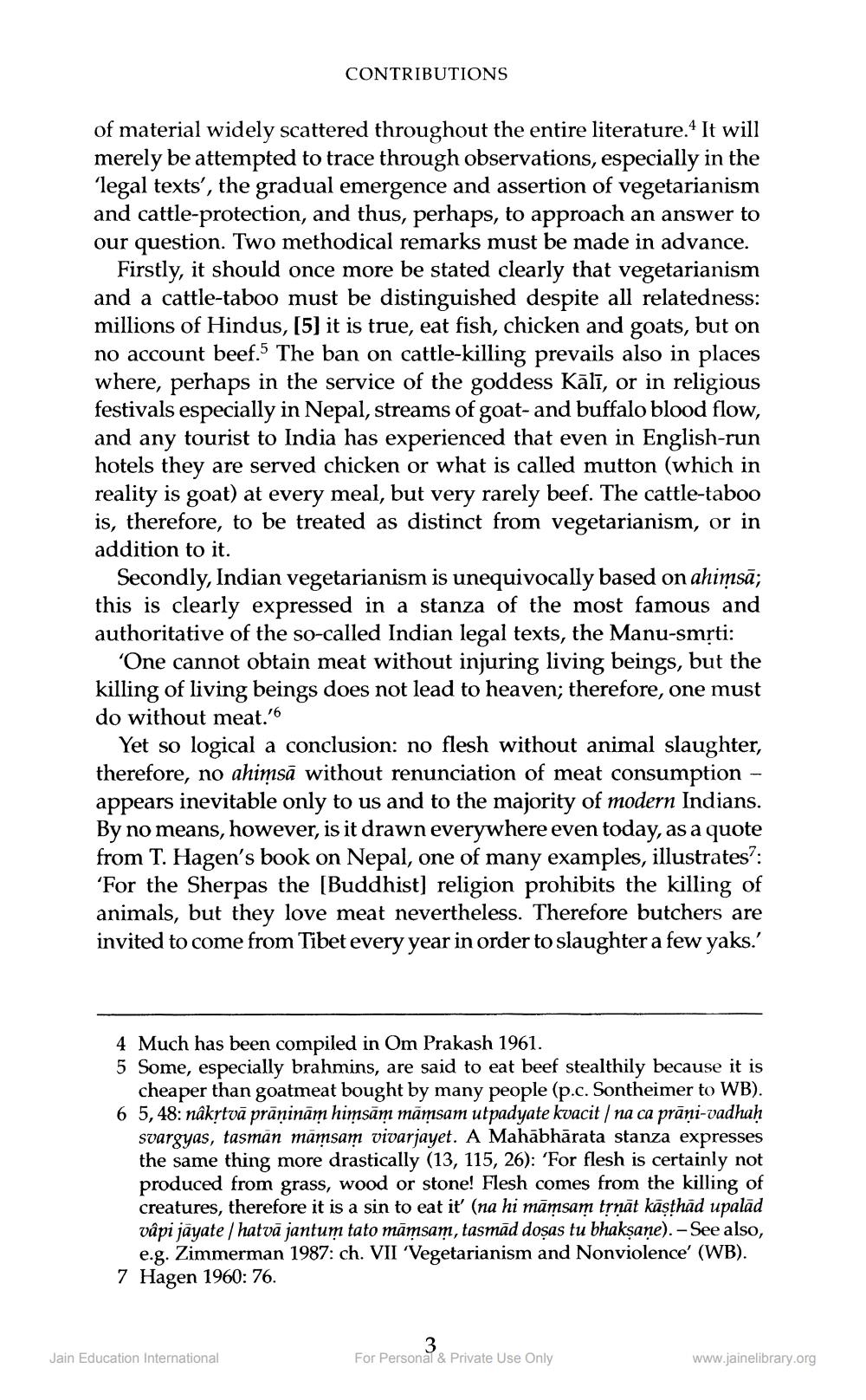________________
CONTRIBUTIONS
of material widely scattered throughout the entire literature. It will merely be attempted to trace through observations, especially in the
legal texts', the gradual emergence and assertion of vegetarianism and cattle-protection, and thus, perhaps, to approach an answer to our question. Two methodical remarks must be made in advance.
Firstly, it should once more be stated clearly that vegetarianism and a cattle-taboo must be distinguished despite all relatedness: millions of Hindus, (5) it is true, eat fish, chicken and goats, but on no account beef. The ban on cattle-killing prevails also in places where, perhaps in the service of the goddess Kālī, or in religious festivals especially in Nepal, streams of goat-and buffalo blood flow, and any tourist to India has experienced that even in English-run hotels they are served chicken or what is called mutton (which in reality is goat) at every meal, but very rarely beef. The cattle-taboo is, therefore, to be treated as distinct from vegetarianism, or in addition to it.
Secondly, Indian vegetarianism is unequivocally based on ahimsā; this is clearly expressed in a stanza of the most famous and authoritative of the so-called Indian legal texts, the Manu-smrti:
'One cannot obtain meat without injuring living beings, but the killing of living beings does not lead to heaven; therefore, one must do without meat.'
Yet so logical a conclusion: no flesh without animal slaughter, therefore, no ahimsā without renunciation of meat consumption - appears inevitable only to us and to the majority of modern Indians. By no means, however, is it drawn everywhere even today, as a quote from T. Hagen's book on Nepal, one of many examples, illustrates?: “For the Sherpas the [Buddhist] religion prohibits the killing of animals, but they love meat nevertheless. Therefore butchers are invited to come from Tibet every year in order to slaughter a few yaks.'
4 Much has been compiled in Om Prakash 1961. 5 Some, especially brahmins, are said to eat beef stealthily because it is
cheaper than goatmeat bought by many people (p.c. Sontheimer to WB). 6 5,48: nâkrtvā prāṇinām himsām māmsam utpadyate kvacit / na ca prāņi-vadhaḥ
svargyas, tasman mamsam vivarjayet. A Mahābhārata stanza expresses the same thing more drastically (13, 115, 26): 'For flesh is certainly not produced from grass, wood or stone! Flesh comes from the killing of creatures, therefore it is a sin to eat iť (na hi māmsam trnāt kāşthād upalad vâpi jāyate / hatvā jantum tato māmsam, tasmad dosas tu bhakşane). - See also,
e.g. Zimmerman 1987: ch. VII 'Vegetarianism and Nonviolence' (WB). 7 Hagen 1960: 76.
Jain Education International
For Personal & Private Use Only
www.jainelibrary.org




